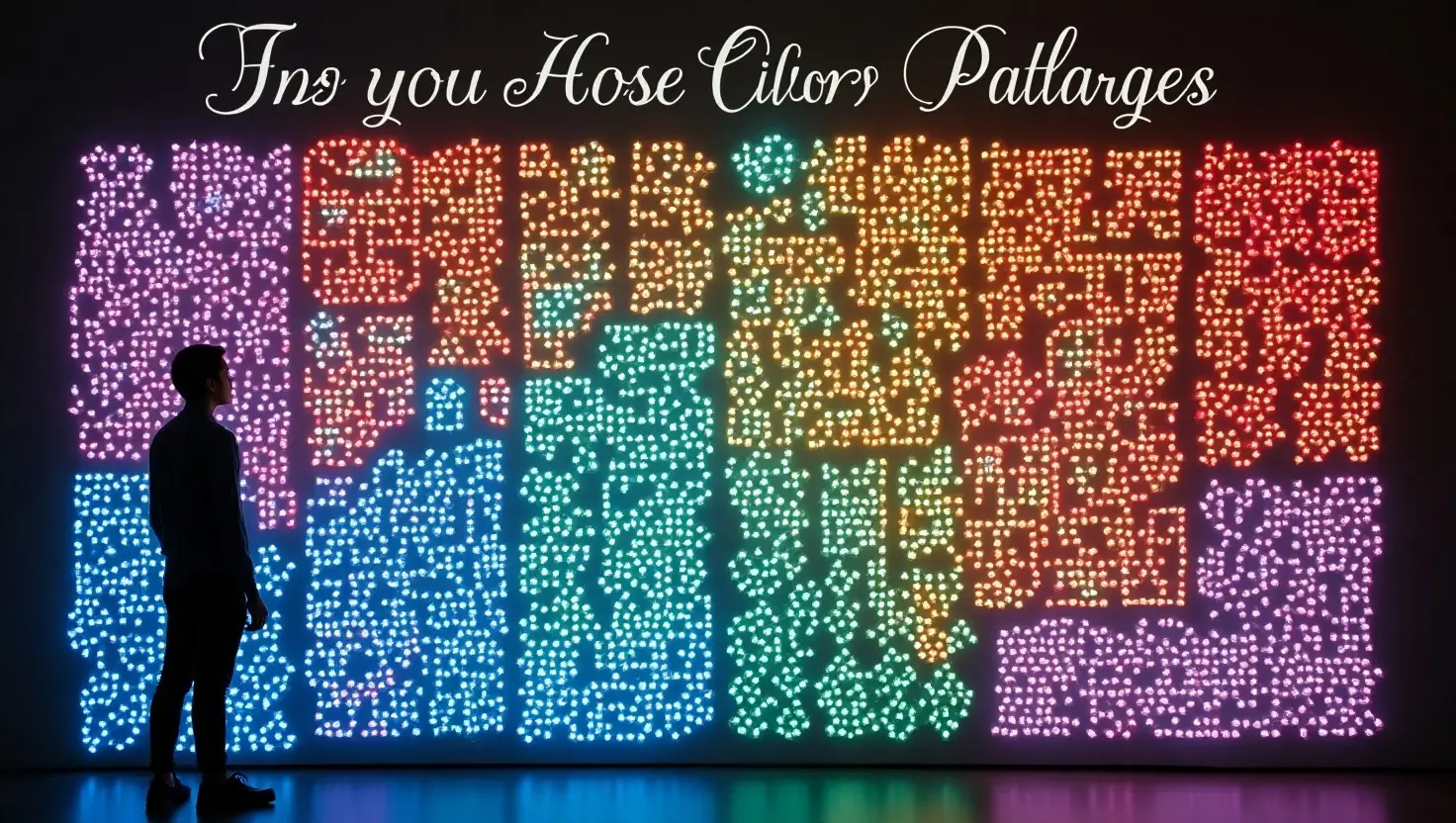Color blindness doesn’t have to hold you back. Explore solutions, challenges, and tips to navigate this common condition.

Table of Contents
“7 Jaw-Dropping Moments from Sunita Williams’ Return”
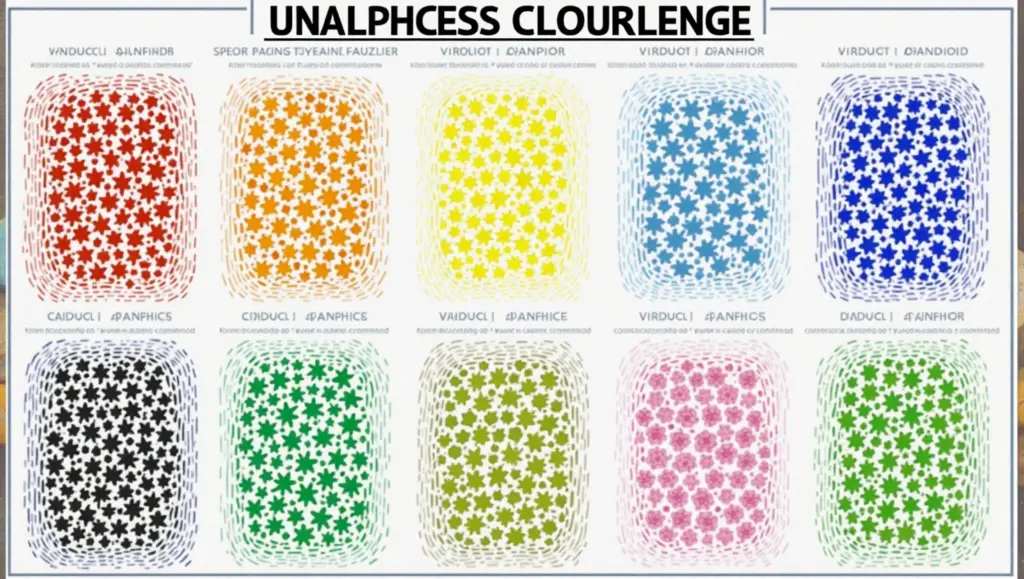
7 Ways to Conquer Color Blindness: Take the Challenge Today
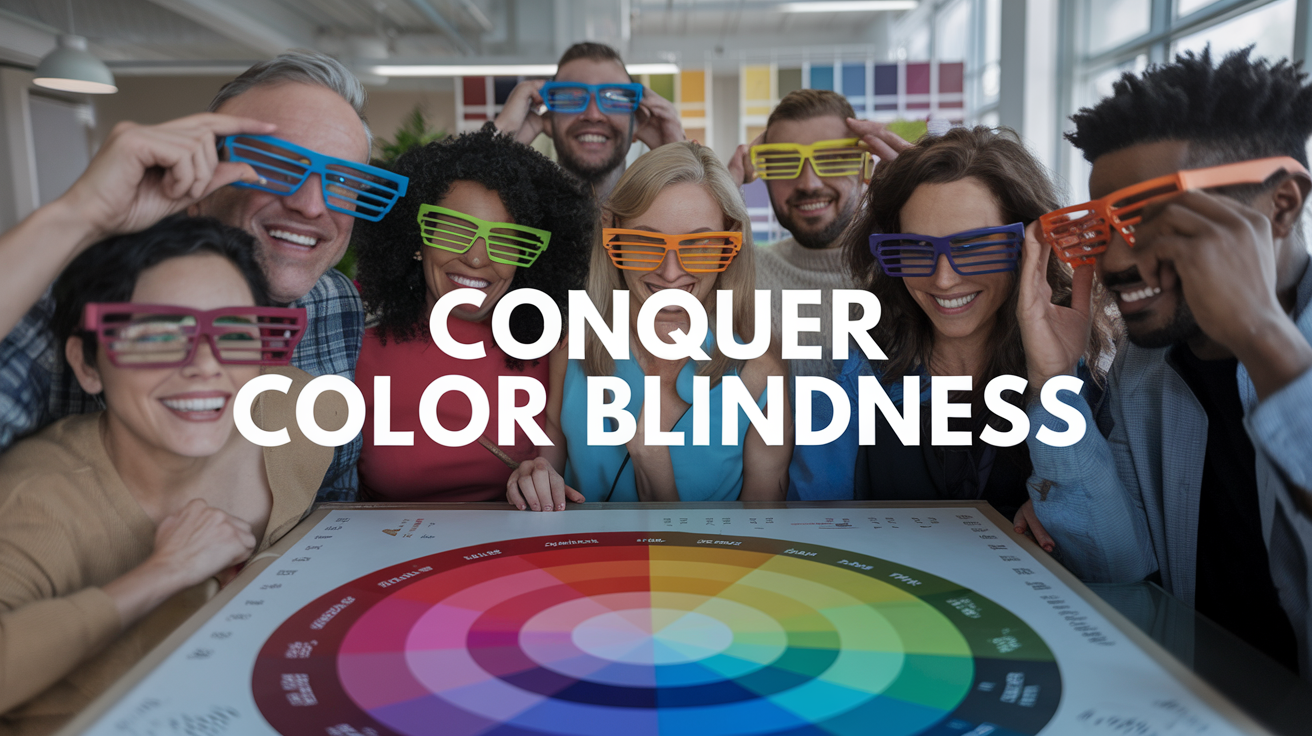
Are you tired of feeling left out when your friends rave about a vibrant sunset or debate the color of that infamous dress? 🌅👗 Color blindness affects millions worldwide, but it doesn’t have to hold you back. Imagine navigating life with confidence, regardless of how you perceive colors!
Welcome to your guide on conquering color blindness! Whether you’re newly diagnosed or have been living with this condition for years, we’ve got you covered. From cutting-edge technology to simple everyday hacks, we’ll explore seven powerful ways to take charge of your color perception. 💪🌈
Get ready to transform your world as we dive into understanding your unique vision, leveraging innovative tools, and embracing your distinctive perspective. This journey will empower you to not just cope, but thrive in a colorful world. Let’s unlock the potential of your eyes and mind as we explore these game-changing strategies for conquering color blindness!
Understand Your Color Blindness
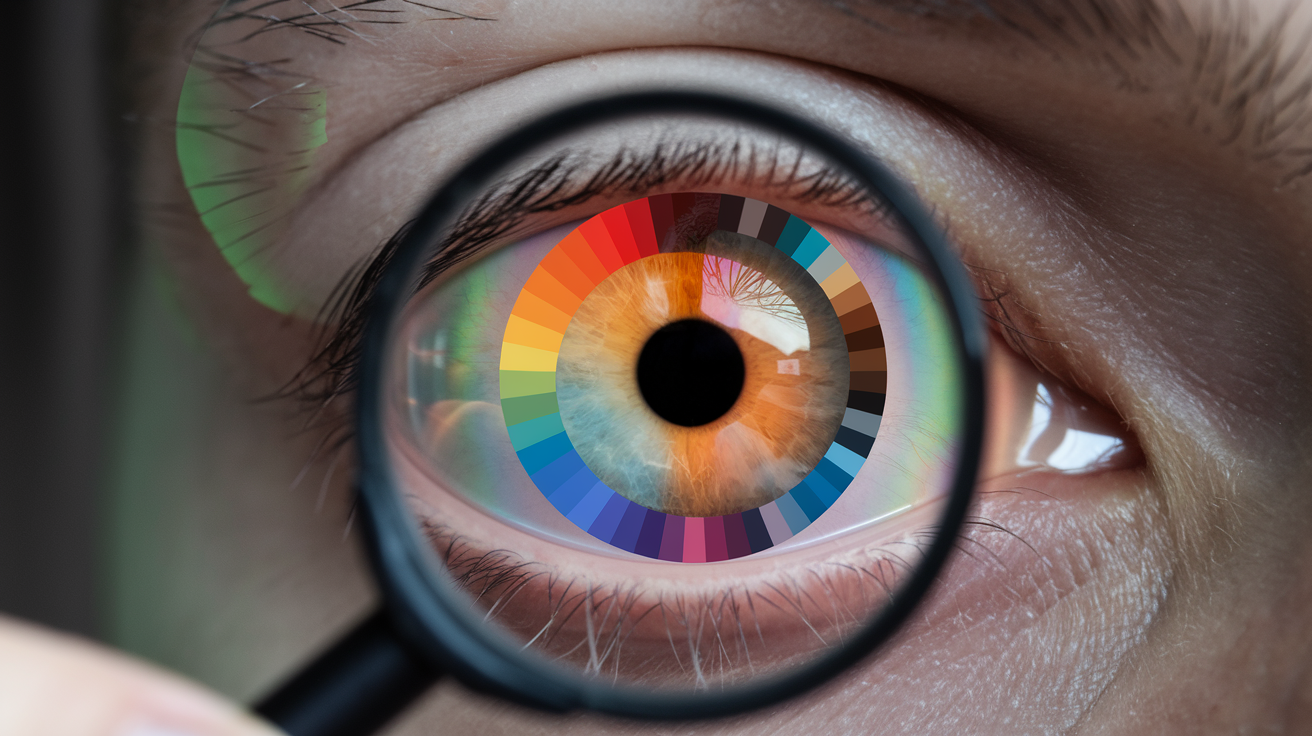
A. Types of color blindness
Color blindness, also known as color vision deficiency, comes in various forms. Understanding the different types can help individuals better manage their condition and seek appropriate solutions. Here are the main types of color blindness:
- Red-Green Color Blindness:
- Deuteranomaly (most common)
- Protanomaly
- Deuteranopia
- Protanopia
- Blue-Yellow Color Blindness:
- Tritanopia
- Tritanopia
- Complete Color Blindness (Monochromacy):
- Rod Monochromacy
- Cone Monochromacy
| Type | Affected Colors | Prevalence |
|---|---|---|
| Red-Green | Difficulty distinguishing reds and greens | ~8% of males, 0.5% of females |
| Blue-Yellow | Difficulty distinguishing blues and yellows | Extremely rare, <0.01% of population |
| Monochromacy | Unable to perceive any colors | Extremely rare, <0.01% of population |
B. Common symptoms
Recognizing the symptoms of color blindness is crucial for early diagnosis and adaptation. Some common signs include:
- Difficulty distinguishing between certain colors, especially reds and greens
- Seeing colors as duller or less vibrant than others do
- Struggling to identify color-coded information (e.g., charts, graphs, maps)
- Challenges in matching or coordinating colors in clothing or home decor
- Trouble recognizing traffic light colors or other color-based signals
- Difficulty identifying ripe fruits or cooked meat by color
C. Diagnostic tests
Several tests can help diagnose color blindness and determine its severity. These include:
- Ishihara Color Test: The most common diagnostic tool, consisting of plates with colored dots forming numbers or shapes.
- Anomaloscope Test: A more precise test that measures the exact nature and degree of color vision deficiency.
- Cambridge Color Test: A computerized test that assesses color discrimination ability.
- Farnsworth-Munsell 100 Hue Test: A comprehensive test that evaluates color vision accuracy and can detect subtle color vision deficiencies.
- Genetic Testing: Can identify specific genetic mutations associated with color blindness.
Early diagnosis is essential for developing effective coping strategies and exploring potential treatments. If you suspect you might have color blindness, consult an eye care professional for a thorough evaluation.
Now that we have a better understanding of color blindness types, symptoms, and diagnostic methods, let’s explore how technology can help individuals with color vision deficiency navigate their daily lives more effectively.
Leverage Technology

A. Color-identifying apps
In today’s digital age, technology has become a powerful ally for those living with color blindness. Color-identifying apps are at the forefront of this technological revolution, offering practical solutions for everyday challenges. These apps use your smartphone’s camera to identify and name colors in real-time, providing invaluable assistance in various situations.
Here’s a comparison of some popular color-identifying apps:
| App Name | Platform | Key Features | Accuracy |
|---|---|---|---|
| ColorBlind Pal | iOS, Android | Color naming, contrast checker | High |
| Color Blind Aid | iOS | Color detection, simulation modes | Medium |
| Colorblind Helper | Android | Color picker, custom color library | High |
| Chromatic Vision Simulator | iOS, Android | Real-time color simulation | Very High |
These apps can be particularly helpful in situations such as:
- Choosing clothing and matching outfits
- Identifying colors in artwork or design projects
- Selecting ripe fruits and vegetables
- Reading color-coded maps or charts
B. Specialized glasses and lenses
Another groundbreaking technological advancement in conquering color blindness is the development of specialized glasses and lenses. These innovative products are designed to enhance color perception and differentiation for individuals with various types of color vision deficiency.
Some notable options include:
- EnChroma glasses: These use a special optical technology to filter specific wavelengths of light, enhancing color contrast and vibrancy.
- VINO Optics: Offering glasses tailored for specific types of color blindness, including protanomaly and deuteranomaly.
- ColorMax lenses: These contact lenses are custom-made to address individual color vision needs.
While these solutions may not work for everyone, many users report significant improvements in their color perception and overall quality of life.
C. Customizable device settings
Modern digital devices often come with built-in accessibility features that can be customized to accommodate color vision deficiencies. These settings can make a substantial difference in how you interact with your devices and consume digital content.
Key customizable settings include:
- Color filters: Adjust screen colors to enhance contrast and differentiation
- High contrast modes: Increase visibility of text and UI elements
- Custom color palettes: Personalize color schemes for easier navigation
To make the most of these features, follow these steps:
- Explore your device’s accessibility settings
- Experiment with different color filters and contrast modes
- Seek guidance from eye care professionals or accessibility experts
- Regularly update your settings as your needs change or new features become available
By leveraging these technological solutions, individuals with color blindness can navigate their daily lives with greater confidence and independence. As we continue to see advancements in this field, it’s crucial to stay informed about new developments and how they can be integrated into your personal strategy for conquering color blindness.
Adapt Your Environment
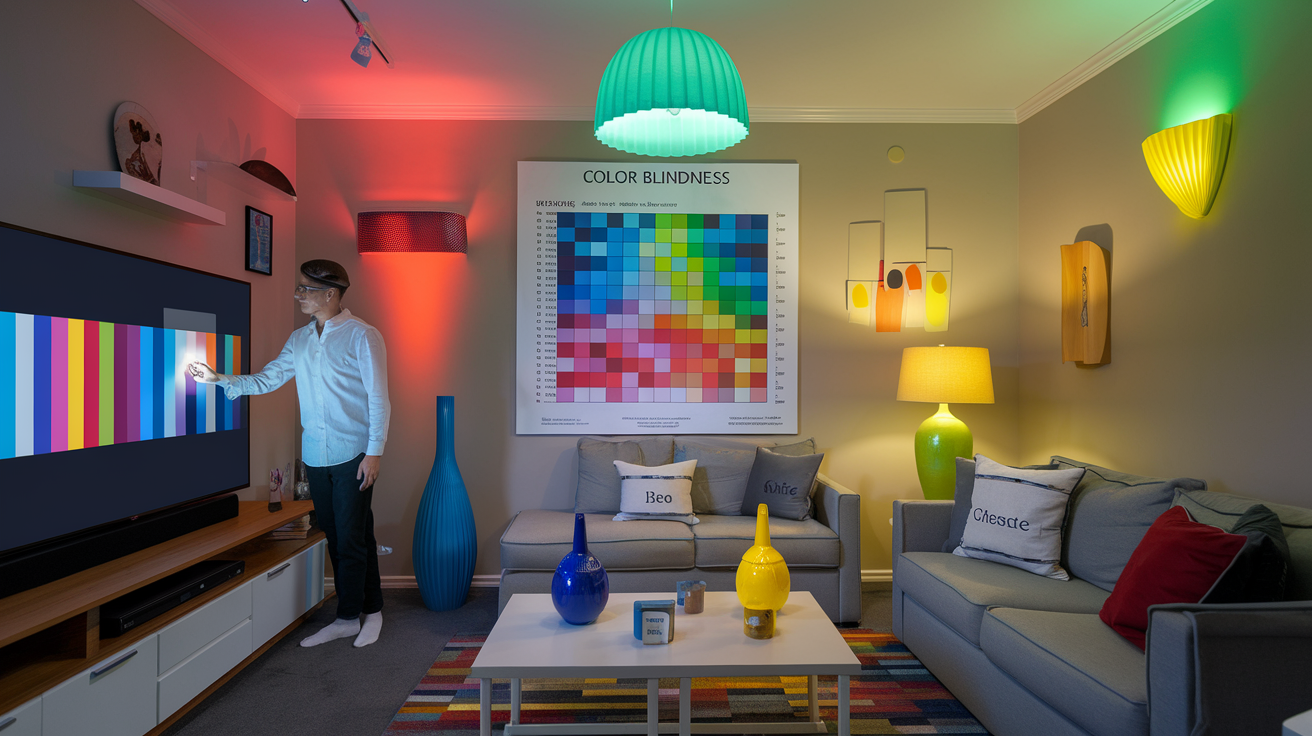
A. Proper lighting techniques
Proper lighting plays a crucial role in helping individuals with color blindness navigate their environment more effectively. By optimizing lighting conditions, you can enhance color perception and improve your ability to distinguish between different hues. Here are some key lighting techniques to consider:
- Natural light: Whenever possible, utilize natural daylight, as it provides the most accurate color representation. Position yourself near windows or work in well-lit outdoor areas.
- Full-spectrum lighting: Install full-spectrum light bulbs that mimic natural daylight. These bulbs emit light across the entire visible spectrum, making colors appear more vibrant and easier to differentiate.
- Adjustable lighting: Use adjustable lamps or dimmer switches to control light intensity. This allows you to fine-tune the lighting to your specific needs and comfort level.
- Task lighting: Incorporate focused task lighting for activities that require precise color discrimination, such as reading or working with small objects.
- Avoid harsh fluorescent lights: Fluorescent lighting can distort colors and make them appear washed out. If possible, replace fluorescent fixtures with LED or full-spectrum alternatives.
B. Color-coding systems
Implementing effective color-coding systems can significantly improve your ability to navigate and organize your environment. Here are some strategies to create colorblind-friendly coding systems:
- Use patterns and textures: Incorporate patterns or textures alongside colors to provide additional visual cues. For example, use stripes, dots, or geometric shapes to differentiate between categories.
- Implement high-contrast color combinations: Choose color pairs that are easily distinguishable, such as blue and yellow or black and white.
- Label colors: Add text labels or symbols to color-coded items, ensuring that information is not solely reliant on color recognition.
- Utilize color-blind friendly palettes: Adopt pre-designed color palettes specifically created for individuals with color vision deficiency.
- Create a personalized color key: Develop a reference guide that matches colors to specific meanings or categories in your system.
| Color Combination | Contrast Level | Effectiveness for Color Blindness |
|---|---|---|
| Black & White | High | Excellent |
| Blue & Yellow | High | Very Good |
| Purple & Green | Medium | Good |
| Red & Blue | Medium | Fair |
| Red & Green | Low | Poor |
C. Contrast enhancement strategies
Enhancing contrast in your environment can significantly improve your ability to differentiate between colors and objects. Consider the following strategies:
- Increase brightness and saturation: Adjust display settings on electronic devices to enhance color vibrancy and contrast.
- Use high-contrast modes: Enable high-contrast settings on computers and smartphones to improve readability and color distinction.
- Apply contrasting backgrounds: Place objects against contrasting colors to make them stand out more clearly.
- Utilize edge detection: Emphasize object boundaries with outlines or borders to improve differentiation between similarly colored items.
- Implement grayscale techniques: Convert color information to grayscale when color distinction is challenging, focusing on brightness differences instead.
By implementing these adaptive strategies in your environment, you can significantly improve your ability to navigate and interact with the world around you. These techniques not only help in managing color blindness but also enhance overall visual comfort and efficiency in daily tasks. As you continue to explore and refine these methods, you’ll find that conquering color blindness becomes increasingly manageable, allowing you to focus on the unique perspectives and strengths that come with your color vision.
Develop Compensatory Strategies

A. Memorizing color patterns
One of the most effective compensatory strategies for individuals with color blindness is memorizing color patterns. This technique can significantly improve your ability to navigate a colorful world. Here are some practical ways to implement this strategy:
- Create mental associations: Link colors to specific objects or emotions. For example, associate red with stop signs or green with nature.
- Use mnemonic devices: Create rhymes or acronyms to help you remember color sequences, such as “ROY G. BIV” for the rainbow’s colors.
- Practice with color charts: Regularly study color charts to reinforce your memory of different hues and shades.
- Label items: Use text labels on clothing, art supplies, or digital files to identify colors accurately.
| Color | Association | Mnemonic |
|---|---|---|
| Red | Stop sign | “Yellow like a lemon.” |
| Green | Trees | “Green like grass” |
| Blue | Sky | “Blue as the sea” |
| Yellow | Sun | “Yellow like a lemon” |
B. Using texture and shape cues
When color identification is challenging, relying on texture and shape cues can be an invaluable compensatory strategy. Here’s how to make the most of this approach:
- Focus on patterns: Pay attention to unique patterns on clothing, objects, or in nature to differentiate between items.
- Observe light and shadow: Notice how light interacts with surfaces to create depth and contrast.
- Identify distinctive shapes: Recognize objects by their characteristic forms rather than their colors.
- Explore tactile differences: Use touch to distinguish between textures when visual cues are insufficient.
C. Asking for assistance confidently
While developing independent strategies is crucial, it’s equally important to feel comfortable seeking help when needed. Here are some tips for asking for assistance confidently:
- Be open about your color blindness: Educate those around you about your condition to foster understanding and support.
- Prepare specific questions: Instead of general inquiries, ask targeted questions like, “Is this shirt blue or purple?”
- Use technology as a conversation starter: Demonstrate color identification apps to engage others and explain your needs.
- Express gratitude: Thank people for their assistance to encourage future help and create positive interactions.
By implementing these compensatory strategies, individuals with color blindness can navigate their environment more effectively and confidently. Memorizing color patterns provides a foundation for independent color identification, while using texture and shape cues offers alternative ways to distinguish objects. Finally, feeling comfortable asking for assistance when needed ensures that you have support in challenging situations. As you practice these techniques, you’ll find that your ability to manage color-related challenges improves significantly, enhancing your overall quality of life.
Explore Color Therapy
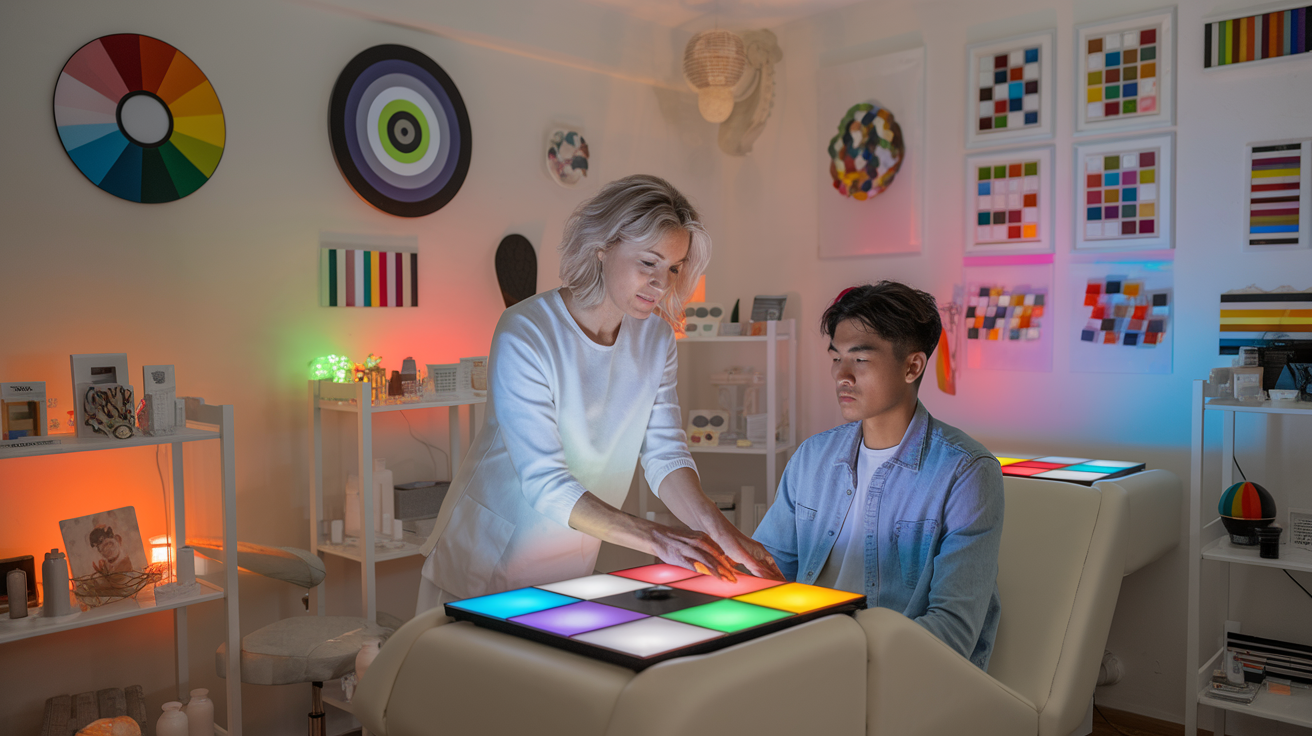
Vision training exercises
Vision training exercises can be an effective way to improve color perception for individuals with color blindness. These exercises aim to strengthen the eye muscles and enhance visual processing. Here are some popular techniques:
- Color identification drills
- Contrast sensitivity training
- Visual memory games
- Eye movement exercises
| Exercise | Description | Benefits |
|---|---|---|
| Ishihara plate practice | Regularly viewing and identifying numbers in Ishihara color plates | Improves color discrimination |
| Color sorting tasks | Arranging colored objects by hue or shade | Enhances color differentiation skills |
| Visual search activities | Finding specific colored objects in a cluttered image | Boosts color recognition in complex environments |
| Eye tracking exercises | Following colored objects with eyes without head movement | Strengthens eye muscles and coordination |
Consistent practice of these exercises can lead to gradual improvements in color perception and overall visual acuity.
Cognitive behavioral techniques
Cognitive behavioral techniques focus on changing thought patterns and behaviors related to color perception. These methods can help individuals with color blindness develop adaptive strategies and improve their confidence in color-related tasks.
Key cognitive behavioral approaches include:
- Positive self-talk and affirmations
- Mindfulness practices for visual awareness
- Exposure therapy to challenging color situations
- Goal-setting for color recognition improvement
By incorporating these techniques into daily life, individuals can build resilience and develop a more positive outlook on their color vision challenges.
Art therapy for color perception
Art therapy offers a creative and expressive approach to exploring color perception for those with color blindness. This therapeutic method combines visual stimulation with emotional processing, potentially leading to improved color awareness and self-expression.
Benefits of art therapy for color blindness include:
- Enhanced color sensitivity through repeated exposure
- Improved emotional connection to colors
- Development of personal color associations
- Increased confidence in color-related tasks
| Art Therapy Activity | Purpose | Potential Outcome |
|---|---|---|
| Color mixing experiments | Explore color relationships | Better understanding of color composition |
| Abstract painting with limited palettes | Encourage creative use of available colors | Improved ability to work within color constraints |
| Color journaling | Document daily color experiences | Increased awareness of personal color perception |
| Collaborative color projects | Share and learn from others’ color experiences | Expanded color vocabulary and understanding |
Now that we’ve explored color therapy techniques, let’s move on to the importance of staying informed and connected with the colorblind community.
Stay Informed and Connected

Join support groups
Connecting with others who share similar experiences can be incredibly empowering when living with color blindness. Support groups offer a wealth of benefits, including emotional support, practical advice, and a sense of community. Here are some ways to get involved:
- Online forums: Participate in discussions on platforms like Reddit’s r/ColorBlind or Facebook groups dedicated to color vision deficiency.
- Local meetups: Search for in-person gatherings in your area using websites like Meetup.com or through local vision organizations.
- Professional associations: Join organizations like the Color Blind Awareness Foundation to stay connected with the wider colorblind community.
| Platform | Benefits | How to Join |
|---|---|---|
| Online forums | 24/7 access, global community | Create an account, introduce yourself |
| Local meetups | Face-to-face interaction, local resources | Search online, RSVP to events |
| Professional associations | Expert insights, advocacy opportunities | Apply for membership, attend events |
Follow research developments
Staying informed about the latest advancements in color blindness research can provide hope and practical solutions. Here’s how to keep up-to-date:
- Subscribe to scientific journals focusing on vision research
- Follow reputable vision health organizations on social media
- Set up Google Alerts for keywords like “color blindness treatment” or “color vision research.”
- Attend conferences or webinars on color vision deficiency
By keeping abreast of new developments, you’ll be better equipped to make informed decisions about your eye health and potential treatment options.
Participate in clinical trials
Contributing to scientific research not only advances our understanding of color blindness but also gives you access to cutting-edge treatments. Here’s how to get involved:
- Register on clinical trial databases like ClinicalTrials.gov
- Consult with your ophthalmologist about ongoing studies in your area
- Reach out to university research departments specializing in vision science
Participating in clinical trials can be a rewarding experience, offering the chance to potentially benefit from new treatments while helping others with color vision deficiency.
By staying informed and connected, you’ll be better equipped to navigate the challenges of color blindness and take advantage of new opportunities as they arise. Remember, you’re not alone in this journey, and there’s a whole community ready to support and learn alongside you. As we move forward, let’s explore how embracing your unique perspective can turn what some may see as a limitation into a strength.
Embrace Your Unique Perspective

Discover color blindness advantages
Color blindness, often seen as a limitation, can actually offer unique advantages in various aspects of life. People with color vision deficiency often develop enhanced skills in other visual areas, compensating for their reduced color perception. Here are some notable advantages:
- Enhanced night vision
- Improved pattern recognition
- Better ability to detect camouflage
- Heightened sensitivity to contrast and texture
These abilities can be particularly useful in certain professions and everyday situations. For instance, during World War II, color-blind individuals were sought after for their ability to spot camouflaged enemy positions that others missed.
Pursue color-blind friendly careers
While color blindness may restrict options in certain fields, it can also lead to exciting career opportunities that utilize your unique visual perspective. Consider these color-blind friendly career paths:
| Career | Advantages for Color-Blind Individuals |
|---|---|
| Graphic Design | Focus on contrast and layout rather than color |
| Photography | Excelling in black and white photography |
| Software Development | Creating accessible and user-friendly interfaces |
| Military/Law Enforcement | Enhanced ability to detect camouflage |
| Data Analysis | Focusing on patterns and trends rather than color-coded data |
These careers not only accommodate color blindness but can also benefit from the unique skills you’ve developed as a result of your condition.
Educate others about your experience
Sharing your experience with color blindness can be both empowering for you and enlightening for others. By explaining how you perceive the world, you can:
- Raise awareness about color vision deficiency
- Help others understand the challenges you face
- Demonstrate your unique problem-solving skills
- Inspire empathy and inclusivity in your community
Consider creating a presentation or demonstration to show how you see colors differently. This can be a powerful tool for educating friends, family, and colleagues about your perspective.
Advocate for inclusive design
Your unique perspective makes you an invaluable asset in promoting inclusive design. By advocating for color-blind friendly practices, you can:
- Improve accessibility in digital and physical spaces
- Encourage the use of colorblind-friendly tools and technologies
- Consult on projects to ensure they are accessible to all
- Push for legislation that promotes inclusive design standards
Remember, your advocacy not only benefits those with color blindness but also contributes to a more inclusive society for everyone. By embracing your unique perspective, you can turn what some may see as a challenge into an opportunity to make a positive impact on the world around you.

Living with color blindness doesn’t have to be a limitation. By understanding your condition, leveraging technology, and adapting your environment, you can navigate the world with confidence. Developing compensatory strategies, exploring color therapy, and staying informed about new developments in the field will further enhance your ability to manage color blindness effectively.
Remember, your unique perspective is valuable. Embrace it and use it to your advantage. By implementing these seven strategies, you can conquer color blindness and turn what some may see as a challenge into an opportunity for growth and innovation. Take the first step today and embark on your journey to a more colorful world.
Share this content:
